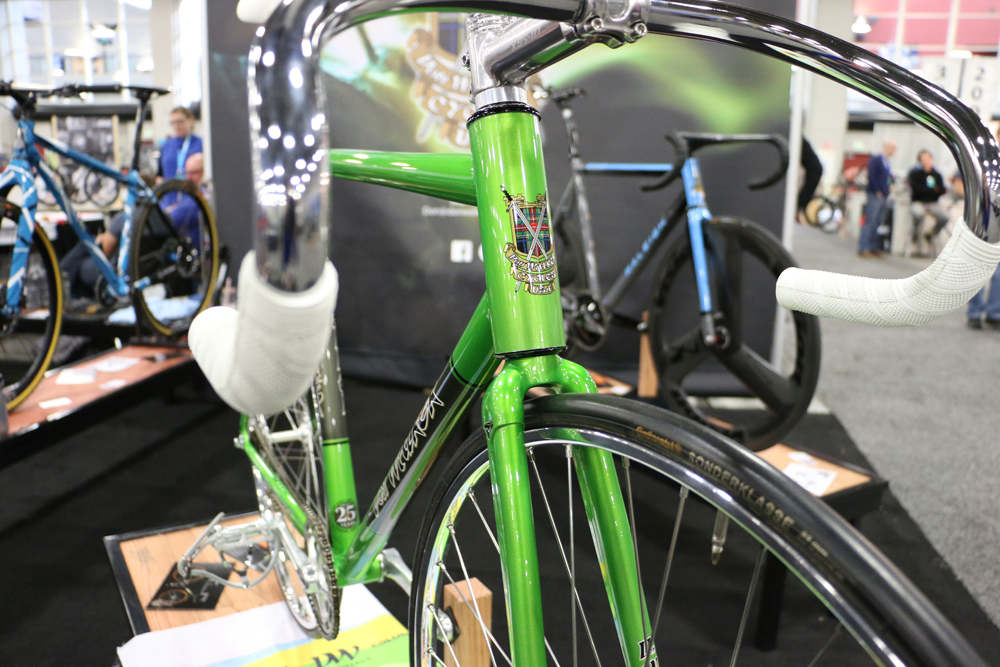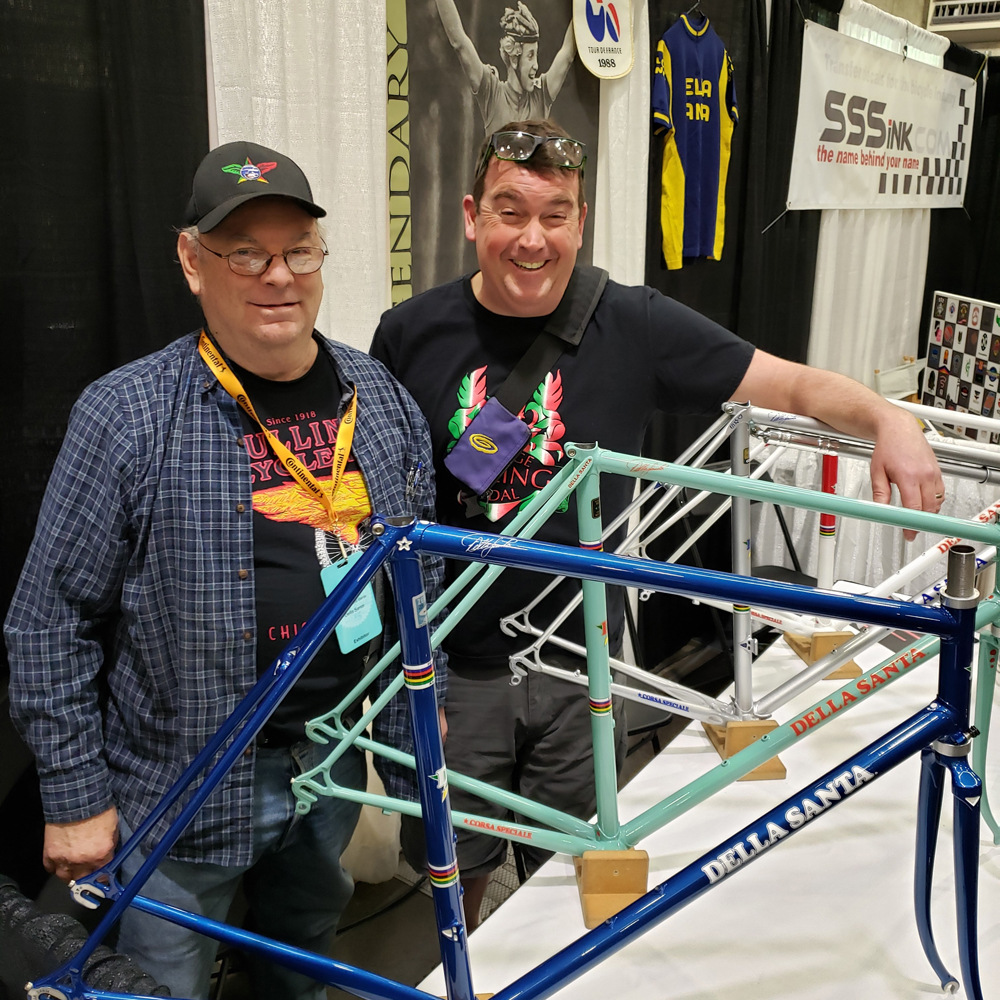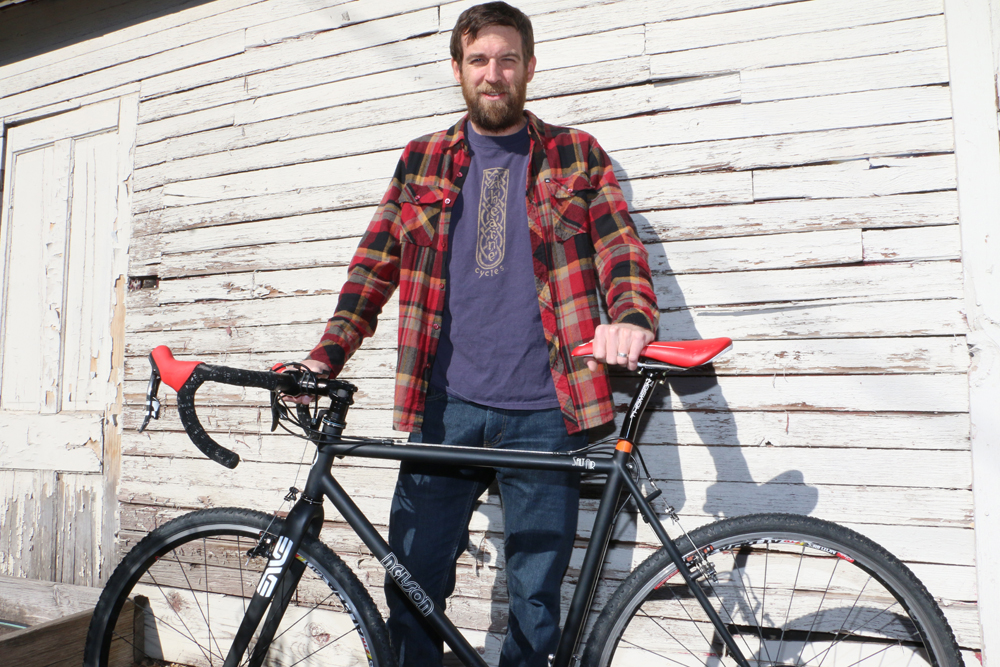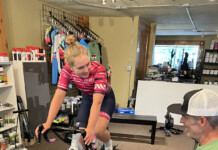By John Higgins — If you have ever had the opportunity to attend the North American Handmade Bicycle Show (NAHBS), you may have had your eyes opened to the possibility of a new bike, made just for you. A custom handmade bicycle is the pinnacle of bicycle ownership for many riders, and the cost is comparable to what you would pay for a premium model from a major manufacturer, or less!

Don Walker, frame builder and the show organizer, gave two criteria for defining a “handmade” bicycle:
- production of the bicycle does not start until after the customer places an order (i.e. the bike is not yet made), and
- traditional building methods are used, that are hands on. There is no robotic welding, assembly, or mass production techniques used.
Furthermore, you get to have considerable input into the look, feel and selection of parts for the bicycle.
Handmade is often synonymous with “custom”, and if you are thinking custom, this needs to be defined. Not all handmade frame builders offer the same level of customization. Custom can refer to:
- Frame material selection (steel, titanium, carbon) and tube joining (e.g. lug or fillet)
- Geometry and sizing, specifically for your measurements
- Paint job / graphics
- Components (drivetrain, wheels, etc)
Most builders specialize in using a single frame material, and in choosing the frame builder, you are choosing the material. Typically you get a choice of component packages, or can specify exactly what you want, as well as the color of the bike. However not all handmade builders offer custom geometry. That is not an issue if you fall in the middle of the bell curve for your height, weight, proportions, health and your riding style. But if you are an outlier who has trouble getting well fitted on a stock production bicycle, you are a potential candidate for custom geometry.

Photo by Patrick Walsh
Frame builders with a long established reputation like Richard Sachs and Roland Della Santa make a signature frame, and you are buying that frame geometry and their craftsmanship in making it. Customization is limited. Other frame builders go to great lengths to understand what you experience while riding, your future intentions, and design a bike that is exquisitely built for you.
[Editor’s Note: Roland Della Santa sadly passed away in May 2019, two years after this article was originally written.]
All frame builders want to make sure you are riding a bike that is the correct size and shape for you, but they are not pretending it will be a perfect fit on arrival. Dialing in your fit happens after you have your new dream machine, but the frame builder wants to make sure this is easily achievable. To ensure the right size, and a good fit, the frame builder is going to want to gather information from you. In 2017 walked the aisles of the NAHBS show in Salt Lake City, Utah for 2 days asking frame builders what information they wanted from a prospective customer to ensure they built the right size bike.

As expected, answers varied but there were some consistent and recurring themes. Frame builders want to know where you bike-body contact points are in relation to each other when you are in a riding position that feels great. Ideally this comes from a “reference bike” i.e. a bike that you feel great on when you ride. If you have a reference bike the 4 key measurements, which you can obtain yourself are:
- Saddle height (from bottom bracket)
- Saddle set back (tip of saddle nose behind bottom bracket)
- Saddle nose to center of handlebar at the stem clamp
- Saddle to bar drop (height of the top of the bars relative to top of saddle)
Alternative measurements to these are: Handlebar X and Y and Saddle X and Y, which are more likely to come from a session on a size cycle (bike simulator) with a bike fitter. Some builders will ask for a lot more measurements, but these are the key metrics.
From these measurements the frame builder positions you in space on the pedals, saddle and handlebars, and then designs the frame beneath you, considering weight distribution, bike handling and responsiveness.
Now let’s say you want a custom handmade bicycle because you never feel great on a bicycle, and don’t have a good reference bike to take dimensions off. There are a couple of approaches you can take. An experienced frame builder will be asking about your current bike, what your fit position is (same measurements from above) and how you feel on your current bike and what irks you when riding it. They may also ask for your body measurements of height, foot, inseam, torso, and arm length. From this information they will determine how to position you for a better riding experience.
Alternatively the frame builder may recommend you see a local bike fitter to get assessed and measured, and to gather information to pass onto the builder. This is a common recommendation as often the frame builder of choice is nowhere close to home, and you are unlikely to meet in person. A fitter will interview the rider, assess them on a current bike, and may take body measurements and/or use a size cycle to simulate a riding position. From this information the fitter can provide key metrics for the frame builder to work from. Most bike fitters are not frame builders, and most frame builders are not fitters, but they offer complementary services and can help each other out for the benefit of the rider. When you take delivery of a handmade bicycle (or any bicycle for that matter), the fit still needs to be dialed in, but this can be achieved without gross distortions of the stem or seat post as the bike is designed to be a close fit, and will look great and ride better.
Here in Utah we are fortunate to have an increasing number of local frame builders, as well as a multiple bike fitters. Your next (or first) handmade bicycle may be closer than you thought.








